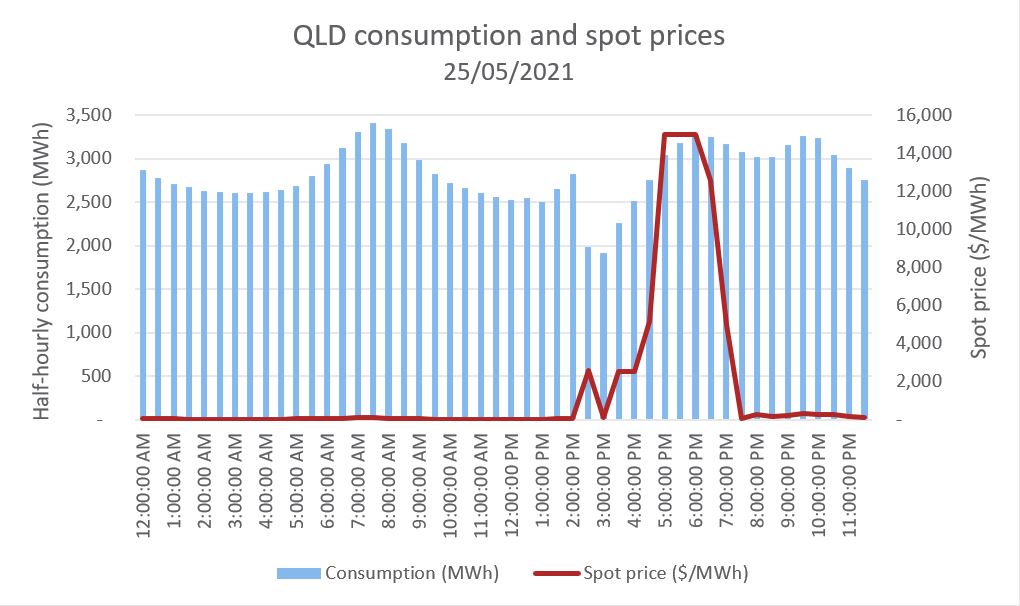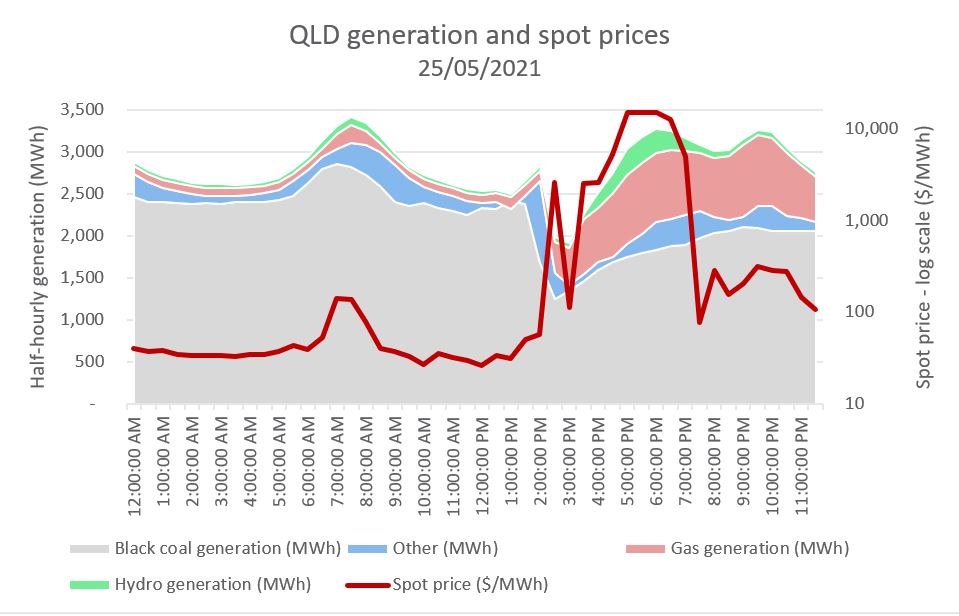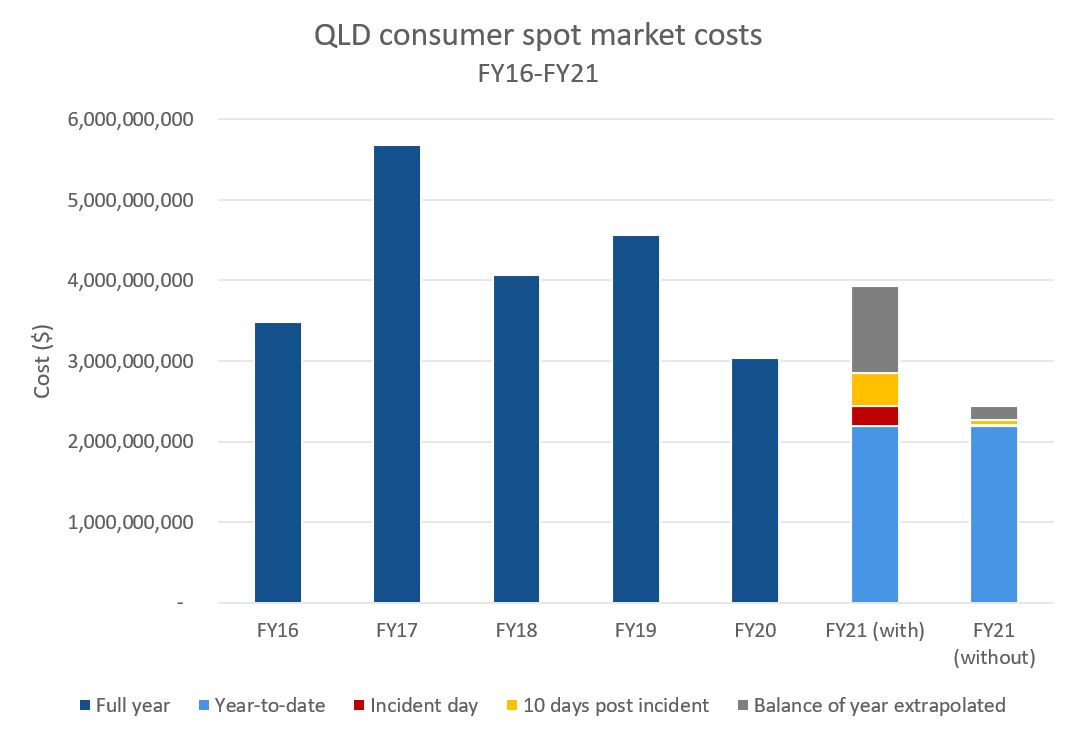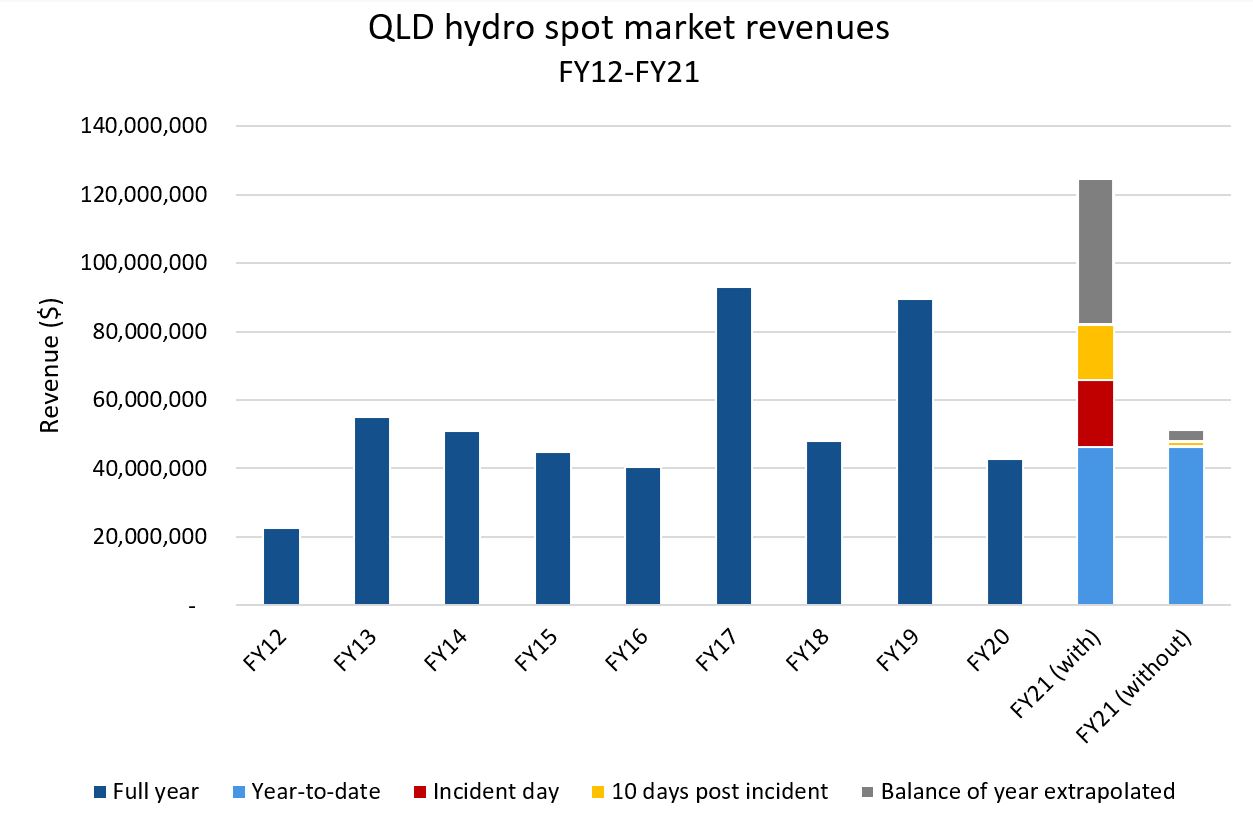Tail risk in the electricity market
Azhar Khan and Peter Eben investigate the implications from last month’s Callide C coal power station explosion from the perspective of tail or extreme event risk, and explore how these risks can be managed as several coal plants reach the end of their technical life by 2030.
Last month, an explosion at the Callide C coal power station resulted in approximately 477,000 customers without electricity in Queensland. Callide C is a 50/50 joint venture between CS Energy (Queensland Government-owned) and Intergen. The operator of the station was CS Energy. They had established proper safety protocols; ensured staff evacuated when they noticed the unit was not operating normally and as a result, there were no injuries.
Callide C was commissioned in 2001. It is the newest coal plant in the National Electricity Market (NEM) with a capacity of approximately 825MW, or between 8–10 per cent of a typical peak demand day in Queensland. While the cause is yet to be determined, the incident does bring into question our dependence on coal plants – most of the other units in the NEM were commissioned in the 1970s-1980s and considered to be less reliable than the more modern Callide C.
In this article, we investigate the incident as a case of ‘tail’ or extreme event risk and explore how these risks can be managed as several coal plants reach the end of the technical life by 2030 [1]. These risks are a focus of government policymakers and are centered around the security, reliability, and affordability of power supply. The added long-term risk of climate change increases the pressure for the early retirement of Australia’s coal power stations.

Overview of the incident
The Callide C turbine unit four exploded at 1:44pm on 25 May 2021. There were three other units at Callide C within the same turbine hall. The chart below shows the half-hourly energy consumption as well as spot market prices in Queensland for the day.

Prior to the incident, we see grid consumption gradually decreased through to midday as rooftop solar reduced the need for households to utilise grid energy. After the incident, we see consumption immediately reduced by 20% as AEMO implemented load-shedding to maintain the security of supply and grid stability (AEMO sometimes involuntarily and/or voluntarily cuts power to customers to bring demand into balance with supply).
Spot prices initially jumped in response to the generator shortage; however, with ongoing load-shedding and rooftop solar reducing grid demand, prices returned to stable levels within hours. Subsequently, power was restored and the sun set, which led to an increase in prices until they reached the market price cap of $15,000 per MWh (Megawatt hour); for reference FY20 had an average price of $53 per MWh.
The next chart illustrates why prices increased so drastically in response to higher grid consumption. Prior to the incident, black coal was the dominant generation source providing most of the power. Solar energy, gas, and hydro provided minimal power. After the incident, several coal units remained offline including the other three turbine units at Callide. The absence of cheap coal power required energy production from other sources, including more expensive gas and hydro energy to fill the gap and meet demand.

Typically, these fuels are called on to meet the evening peak demand when the solar energy reduces, but when all power stations are operational there is adequate supply. This results in less of a need for a more expensive generation and so competition usually keeps spot prices contained. On the day of the incident, even the cumulative combination of all available generation was inadequate to meet demand and so there was no competition to keep prices from reaching the market price cap.
So, what does a price spike on a single day mean to the wholesale electricity market?
The first important point to note is that this is not a single-day event. Callide C unit four will be offline for at least a year and the remaining turbine units until at least later in June. As such, prices continued to remain higher than normal in the 10 days after the incident. The chart below shows the load-weighted spot price (average of the half-hourly spot price weighted by half-hourly energy consumption) for QLD over the past few years.

Note that without this incident, FY21 could have been the lowest cost energy year since before FY16. This is due to lower gas prices and high renewable energy uptake; both factors reduce the system’s short-run marginal costs. However, the event has instead resulted in an estimated $1.5 billion dollar increase in spot market costs (assuming the past 10 days are indicative of the remaining 26 days this financial year).
It is important to note that the wholesale spot market price is not necessarily the cost that customers, retailers, and generators will be exposed to. Due to the possibility of such tail risk, there are well-established markets for over-the-counter or exchange-traded energy financial instruments (futures and options can be found on the ASX Energy website). These contracts help manage spot market risk, provide greater certainty over cash flows, and help access financing.
Another interesting element to consider from the day is the impact this had on some of the generators’ revenues. The chart below shows the historic revenues, along with the current year’s (incident and no incident) revenues for all of Queensland’s hydro energy projects. Here we see that the marginal revenue due to the incident for the hydro projects, $73 million dollars, exceeds the total market revenues seen in entire years like FY20.

Of course, these charts assume prices from the past 10 days will be realised over the final 26 days of the financial year which is not certain, as CS Energy looks to return at least two of Callide’s turbine units to the market before the end of the financial year which should reduce spot prices.
Overall, this incident is a stark reminder that tail risk exists in several sectors outside of typical actuarial practice. The electricity market has seen its share of such events. In the past three years alone, we have had bushfires take out transmission, the disconnection of the Tasmania-Victoria interconnector and the simultaneous outage at Loy Yang coal station, and an explosion at Mortlake gas station (both in Victoria). An aging coal fleet, put under economic and operational pressure by increased uptake in $0 short-run marginal cost renewables (wind and solar), indicates that these risks are not behind us.
We need a clear roadmap for the closure of our coal stations, quickly enough, so they don’t run to the end of their technical lives and pose risks to reliability, cost, and the climate, but also not so quickly that the market can’t build adequate and appropriate generation capacity to replace them. Policymakers refer to this issue as resource adequacy. Most recently the Victorian Government announced a deal with the owners of the Yallourn power station to agree on a closure date of June 2028.
A fit-for-purpose policy framework and blueprint will also provide investors with clear signals on when and where generation capacity is required, ensuring an orderly transition from our coal fleet to cheaper, low-carbon generation sources. Risks attached to these large single points of failure will also reduce, although we will see other risks such as variability of generation increase due to a higher level of weather-based generation such as wind and solar. Fortunately, there are several commercially viable solutions to this risk which we can discuss in another article.
So, where does the actuarial skillset help in managing tail risk in energy?
Within retailers and generators, actuaries can and do help manage the business risk by optimising the physical portfolio, as well as selecting (or pricing) appropriate financial instruments to further mitigate risk. For investors and developers, actuaries are well placed to evaluate the potential profitability of technologies critical to the energy transition such as batteries and pumped hydro facilities which are pivotal in managing tail risk events. Policy setters and regulators would also benefit from the ability to determine where risk exists, and what the appropriate techniques are to manage it. Finally, within insurance itself, actuaries responsible for ensuring coal and other generation projects need to be able to accurately quantify the risks that they are exposed to.
If CS Energy is insured against both the incident as well as the foregone revenues associated with being offline for a year, the premium set by the insurer will hopefully have accounted for the sustained high prices following the event. After all, based on pre-incident generation, and post-incident pricing, Callide is losing $6.2 million dollars a day from being offline, quite high for the state-owned company which reported an underlying EBITDA of $300 million in 2020.
|
[1] Australian Energy Market Operator (AEMO) |
CPD: Actuaries Institute Members can claim two CPD points for every hour of reading articles on Actuaries Digital.






